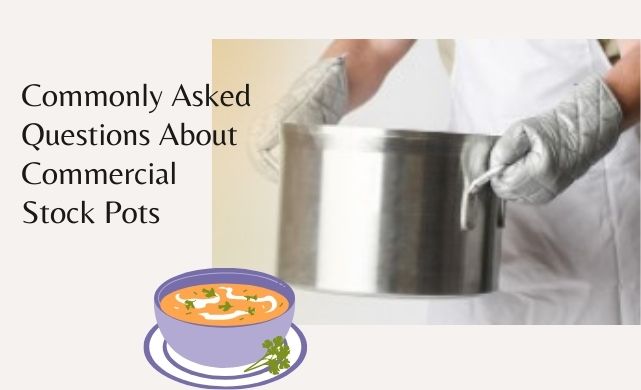When it comes to commercial cookware, the stock pot stands out as an essential tool in any professional kitchen. Known for its size and functionality, stock pots are usually large with sturdy handles for easy maneuvering and often come equipped with a lid. They are primarily used for making stocks, stews, soups, boiling pasta, and steaming vegetables or seafood. The versatility of stock pots makes them indispensable in a busy kitchen setting. Here are some frequently asked questions about stock pots that might help you decide which one suits your needs best: What material is ideal for stock pots? Stock pots are commonly made from aluminum or stainless steel, and some are crafted using a tri-ply material, combining both. The choice of material largely depends on how the pot will be used in the kitchen. Stainless steel is renowned for its durability and longevity. It's easy to clean, resistant to dents and scratches, and less likely to warp. Stainless steel also has low reactivity, preventing flavor transfer and allowing it to be used safely with acidic foods like tomato sauce without causing pitting or staining. However, stainless steel pots tend to be heavier, especially in larger sizes. Aluminum stock pots, on the other hand, are much lighter, making them easier to handle when dealing with larger volumes. They heat up quickly and distribute heat evenly, making them perfect for tasks like boiling water or reducing stocks. But aluminum isn't ideal for acidic foods as it can discolor and lead to surface pitting. Tri-ply stock pots, featuring an aluminum core encased in stainless steel, combine quick heating with durability and heat retention. Which handles are better: riveted or welded? Most stock pots come with two handles, one on each side, to make carrying even full pots easier. When purchasing a stock pot, you'll encounter handles that are either riveted (fastened with metal pins) or welded (where the handle is melted into the pot). The main difference lies in cleanliness. Welded handles offer no crevices where dirt or food particles can accumulate, whereas riveted handles can trap debris in their joints, making them harder to clean thoroughly. What sizes are available for stock pots? A stock pot is typically the largest piece of cookware in a kitchen. Sizes range from as small as 3-1/3 quarts to as large as 160 quarts. Institutions such as hospitals, schools, and universities often use these pots to prepare large quantities of soups, stews, and other meals. In contrast, most restaurants and cafes opt for mid-sized stock pots that strike a balance between capacity and manageability. Cook’s offers a wide selection of stock pots from top manufacturers like Vollrath, Winco, and Carlisle.

Keywords: commercial stock pots
Hydraulic Quick Hitch,Excavator Quick Coupler,Quick Coupler,Quick Hitch
Jiangsu Origin Machinery Co., Ltd , https://www.originmachinery.com




